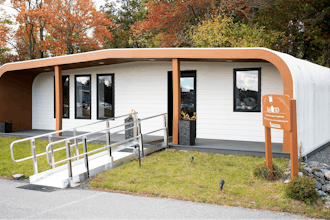Simulation and analysis (S&A) has traditionally been a complex undertaking handled by a small community of CAE simulation experts. They typically work on complex problems and the specialized simulation software they use reflects that intricacy.
Simulations have been used for decades to iterate on alternative designs and reduce the cost of physical testing. With the growing complexity of products, the use of simulation has been expanding to a broader number of use cases throughout the product lifecycle. According to CIMdata, the growth rate of S&A software market share has been around 10 percent over the past five years, which is quite impressive. S&A is now the fastest growing market segment in the PLM industry and has the potential to grow at an even greater rate. More importantly, it has the potential to break out of its niche, supporting product design, and into manufacturing and operations with more mainstream end users.
For years, CAE experts have been storing their simulations on hard drives, disconnected from the rest of the enterprise. As more complex, smart connected products were designed, this lack of connectivity became increasingly inefficient, resulting in manual handoffs and excessive searching, which could go for days and weeks. This has given rise to software, known as Simulation Process and Data Management (SPDM) to manage these simulations.
While the interest in SPDM is there, according to CIMdata, there has been “an extreme disappointment” over the adoption of SPDM and resulting inefficiencies that keep S&A locked up on file servers where only CAE S&A experts have access. Less than five percent of all S&A experts worldwide use some form of SPDM application to manage their simulation models and to collaborate with other simulation specialists and design disciplines in their organizations.
With the growing demand for S&A, there is a need to manage these simulations. But the question remains can S&A be democratized and spread beyond the confines of CAE experts, and into manufacturing and service, for users without deep domain knowledge of the S&A tools?
Platform-based SPDM allows users to reuse complex simulations and broaden the use of simulation results via the web. A platform-based SPDM offers users the ability to encapsulate a series of customer-developed “Simulation Apps,” which embed the ability to integrate functionality and knowledge into CAD models.
The value of this platform-based approach to SPDM is the democratization of S&A, enabling experts to package the built-in knowledge and methods, link it to the design, which can be accessed by many users without advanced simulation expertise, and then use the data to run further simulations. This can now be done across domains and throughout the lifecycle, with complete traceability back to the simulation and requirements that drove the original simulation.
With the rise of smart connected products, many more use cases for simulations are needed during product design, both upstream and downstream of the physical testing phase.
Upstream in the conceptual phase, as the systems architecture is defined and Model Based System Engineering (MBSE) models are used, early prototypes help engineers understand dependencies and the tradeoffs and impacts of competing requirements. These simulations allow companies with strong data-driven digital threads to innovate more quickly.
Simulation is beginning to transform manufacturing with additive and generative design. In the case of additive manufacturing, simulating the material properties and the processes embedded in devices, helps OEMs guarantee that they have the right combination of material and settings to manufacture the necessary part. This ensures the part strength, support structure, and other key requirements will be met so that the part will successfully print. These use cases, when tied with a “digital thread” back into part design and development, help support generative design. Automated “simulation at scale” data
and processes are needed to support generative design—processes by which AI/ML tools generate designs that will work to meet a series of engineering requirements. This may include a new shape capable of being produced at the right strength or designs that can be built within the constraints and tolerances required by both engineering requirements and manufacturing processes.
Simulation is now being used to help organizations understand what has happened or will happen in the field. Even as companies begin to work on new designs and engage customers, they need data from configured Digital Twins—accurate up-to-date configurations of the products running in the field. To simulate current or new potential forces, they must know the exact configuration of the asset, with its maintenance history and everything embedded in it, along with operational IoT data streaming back from its sensors.
For example, one SPDM is based on a series of customer-developed and web-implementable "SimApps" with built-in expert knowledge and methods to create a simulation-driven design that works for non-CAE experts. The SPDM real value in democratizing simulation is its ability to integrate functionality and knowledge into CAD models so that the person making the simulation or evaluation need not worry about complex problems and intricate trade-offs to make the simulations.
According to Gartner’s analyst and vice president, Marc Halpren, “Encapsulated knowledge takes care of it."
As more connected products find their way into the marketplace, the value of SPDM increases dramatically, but at the same time, becomes somewhat invisible. Enterprise end users don’t need to concern themselves with the details about where the CAD file is stored, the HPC cluster the simulation will run on, the encapsulated knowledge to run the simulations, and where the results are stored.
The benefit of a platform-based SPDM is that is allows non-simulation experts access to easy-to-use apps that drive simulation tools and best practices authored by simulation experts. This not only democratizes S&A with mainstream engineers across the enterprise, but also leverages the most up-to-date CAD and other models under configuration management control with complete traceability backward and forward, thus dramatically increasing efficiency while lowering the risk of using obsolete data.
Mark Reisig is director of product marketing at Aras.






















